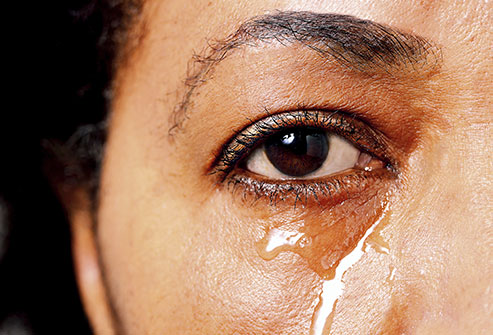Davisa Richards, 58, does not look forward to the fall and winter months. She thinks these months are dreary, dark and depressing. “I get so down in the dumps from about late October to around early April. I am unmotivated, moody and I just feel so hopeless during these months. My energy level is zero and I just can’t seem to get all of me going!” Richards is part of a growing number of people who suffer from seasonal affective disorder or SAD. Medical experts contend that SAD may be related to changes in the amount of daylight we get. Over ten million people struggle with severe SAD which is a form of depression that is most likely to occur in late fall and winter, and goes away by the time summer rolls around. Another 20 percent have a milder form of the disorder. Women are also four times more affected by SAD than men. Sadly, there is a lower awareness of SAD and its treatment in the Black community.
Signs and Symptoms
The red flags for SAD may begin mildly but then become more pronounced as time progresses. The more common symptoms of the condition are:
Depression
Loss of energy
Sleeping difficulties
Appetite or weight changes
Agitation/Moodiness
Lack of concentration
Thoughts of suicide or death
Unmotivated
Social withdrawal
Causes
No one knows what exactly causes SAD but researchers do know, however, that there are several factors at play:
Serotonin: When there is less sunlight, the brain chemical that affects mood, serotonin, may trigger depression.
Melatonin: When the body’s melatonin levels are disrupted, usually as a result of seasonal changes, sleep is thrown into a tailspin.
Biological clock: Since the number of sunlight hours is reduced during the fall and winter, the body’s internal clock becomes upset and this leads to depression.
Risk factors
There are several factors that can increase your chances of developing SAD:
Heredity: Most SAD sufferers already have family members who are struggling with the condition.
Depression or Bipolar disorder: SAD sufferers who have been diagnosed with these disorders will have a more difficult time seasonally with their diagnosis.
Location: Those who live farther north appear to have more difficulty managing their diagnosis because of the decreased sunlight during winter.
Diagnosis
SAD is not easy to diagnose, so how can a healthcare practitioner tell it is present?
Lab work: A physician might order a complete blood count or a thyroid function test
Psychological work up: A mental health professional will check for any signs of depression and probably have a questionnaire handy to cover the areas of thoughts, feelings, and behaviors.
Physical exam: A doctor will perform a general exam and ask about mental health as well. Depression has also been linked to numerous physical health problems.
Treatment therapies
If a physician recommends light therapy to help cope with SAD, a patient will have to sit a few feet away from a special light box or wear a light visor on their head. Light therapy typically lasts about half an hour and is mostly used in the fall and winter months. The treatment must be done within the first waking hour of each day. The therapy which triggers a brain chemical to regulate mood mimics natural outdoor light. The first line therapy is said to improve moods within just a few days. Natural spectrum light bulbs provide the spectrum of natural daylight and can easily be used as desk and floor lamps. They’re not as cumbersome as light boxes.
There are few symptoms associated with light therapy when it is used correctly. Light therapy side effects can occur, however, if it is used incorrectly like late in the day:
Headache
Fatigue
Irritability and inability to sleep
Eye strain
Other types of therapies that a physician might explore with a SAD patient include antidepressants, psychotherapy. Lifestyle changes can also help to lift dark moods like going outside more often in daylight hours, relaxation therapy, exercising, getting plenty of rest, and avoiding recreational drugs and alcohol. Eating a diet that is high in proteins, vegetables, unprocessed foods and complex carbohydrates is also helpful in coping with SAD. Moving further south is also an option for those who are severely struggling with SAD.
Need more help?
- The American Psychological Association offers a list of therapists who can put together a plan of action: www.apa.org
- The SunBox Company offers a selection of light boxes: www.sunbox.com
- Natural full spectrum lamp light bulbs: Amazon.com
- Bright Light Hat Visor: lighttherapyproducts.com
